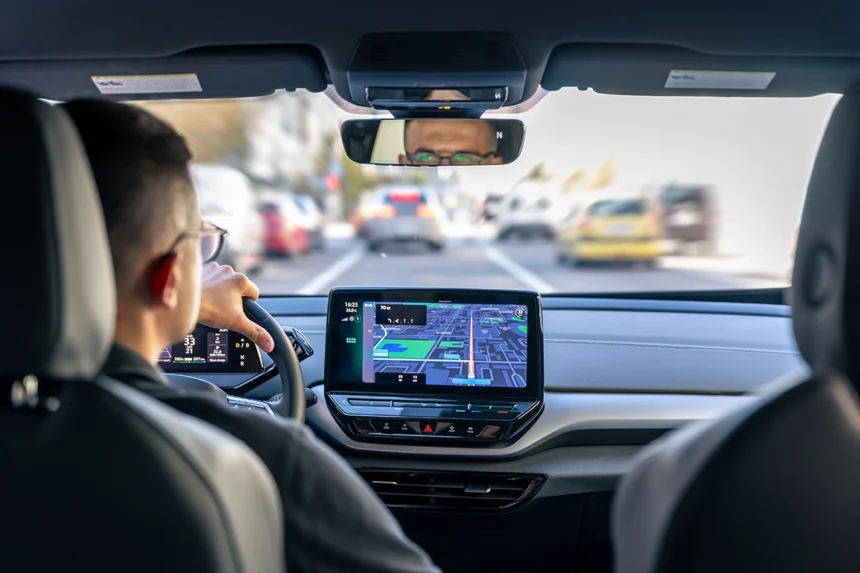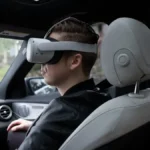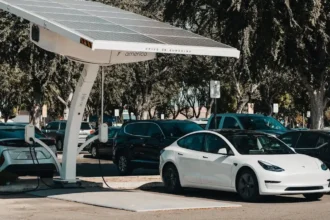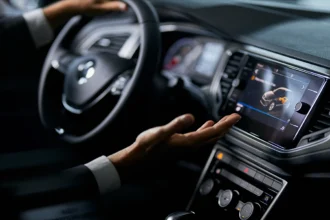Have you ever found yourself stuck in a traffic jam, wishing for a smarter way to navigate the chaos? Or perhaps you’ve marveled at the advances in car technology that seem to pop up every year? The evolution of smart traffic systems and car technology is not just a futuristic dream; it’s a rapidly approaching reality transforming the way we travel. In this article, we’ll explore how smart traffic systems, innovative car technology, and AI traffic management are revolutionizing transportation as we know it.
The Rise of Smart Traffic Systems
As urban populations continue to grow, cities face unprecedented challenges regarding traffic congestion and safety. Traditional traffic management systems struggle to keep up with the increasing volume of vehicles on the road. This is where smart traffic systems come into play.
What Are Smart Traffic Systems?
Smart traffic systems use advanced technologies such as sensors, cameras, and AI algorithms to manage traffic flow effectively. These systems aim to reduce congestion, improve safety, and enhance the overall driving experience. Here are some key components:
- Traffic Sensors: Placed at intersections and along roadways, these devices collect real-time data about vehicle speeds, counts, and traffic conditions.
- CCTV Cameras: These cameras monitor traffic patterns, enabling operators to respond quickly to incidents.
- AI Algorithms: These analyze data collected from sensors and cameras to optimize traffic signals and improve flow.
Benefits of Smart Traffic Systems
The adoption of smart traffic systems offers numerous benefits:
| Benefit | Description |
|---|---|
| Reduced Congestion | By optimizing traffic flow, these systems minimize delays. |
| Improved Safety | Real-time monitoring helps in managing incidents more effectively. |
| Environmental Impact | Reduced congestion leads to lower emissions from idling vehicles. |
| Enhanced Commuter Experience | Fewer delays contribute to a more pleasant driving experience. |
The Role of Car Technology in Traffic Management
As smart traffic systems evolve, so does the technology within our vehicles. Modern cars are equipped with sophisticated technologies that not only enhance performance but also improve the safety and efficiency of our journeys.
Key Innovations in Car Technology
- Vehicle-to-Infrastructure (V2I) Communication: This technology allows vehicles to communicate with traffic signals and other infrastructure. For example, when approaching a red light, your car can receive information about when the light will change, allowing you to adjust your speed accordingly.
- Advanced Driver-Assistance Systems (ADAS): Features like adaptive cruise control, lane-keeping assist, and automatic braking are becoming standard in many vehicles, reducing human error and enhancing safety.
- AI-Powered Navigation: Modern navigation systems use AI to analyze real-time traffic data, suggesting the fastest routes and avoiding congested areas.
How Car Technology Enhances Traffic Flow Optimization
Car technology plays a crucial role in optimizing traffic flow. Here’s how:
- Real-Time Data Sharing: Cars equipped with V2I technology can share their speed and location with traffic management systems, allowing for dynamic signal adjustments.
- Predictive Analytics: AI systems in vehicles can predict traffic conditions based on historical data, helping drivers make informed decisions.
- Autonomous Vehicles: As self-driving cars become more prevalent, they will interact seamlessly with smart traffic systems, further optimizing traffic flow.
The Intersection of Smart Traffic Systems and Car Technology
The synergy between smart traffic systems and car technology is creating a more efficient and safer driving environment. This section explores how these two domains work together to enhance urban mobility.
Smart Cities: The Future of Urban Transportation
Many cities are investing in smart traffic systems to create “smart cities.” These cities leverage technology to improve the quality of life for residents. For example:
- Integrated Traffic Management Systems: These systems combine data from various sources, including smart traffic signals and vehicle communication, to optimize traffic flow across the city.
- Public Transportation Coordination: Smart traffic systems can prioritize public transportation, ensuring buses and trams run on time, which encourages more people to use public transport.
Case Studies: Successful Implementations
- Los Angeles, California: The city has implemented a smart traffic signal system that adjusts light timings based on real-time traffic conditions. This has resulted in a significant reduction in travel times.
- Singapore: Singapore has developed a comprehensive smart traffic management system that includes vehicle monitoring and congestion pricing, leading to improved traffic flow and reduced congestion.
FAQs About Smart Traffic Systems and Car Technology
What are smart traffic systems?
Smart traffic systems are advanced technologies designed to manage and optimize traffic flow using sensors, cameras, and AI algorithms.
How does vehicle-to-infrastructure communication work?
V2I communication allows vehicles to interact with traffic signals and other infrastructure, providing real-time data to improve traffic management.
What benefits do smart traffic systems offer?
They help reduce congestion, improve safety, lower emissions, and enhance the overall commuter experience.
How does AI contribute to traffic management?
AI analyzes traffic data to optimize signal timings, predict traffic conditions, and improve overall traffic flow.
Are autonomous vehicles part of the smart traffic systems?
Yes, autonomous vehicles can integrate with smart traffic systems to optimize traffic flow and enhance safety.
How can cities become smarter with traffic systems?
Cities can invest in technology that integrates traffic management systems with real-time data, enhancing coordination between various modes of transport.
The Future of Transportation: Trends to Watch
As we look ahead, several trends are shaping the future of smart traffic systems and car technology:
- Increased Adoption of AI: Expect to see more sophisticated AI algorithms that can predict traffic patterns and optimize flow even further.
- Expansion of V2I Technology: As more vehicles become equipped with V2I capabilities, cities will implement infrastructure upgrades to support this technology.
- Emphasis on Sustainability: Future traffic management systems will prioritize sustainable practices, such as reducing emissions and promoting public transportation.
- Integration of Mobility Services: Expect to see more coordination between various forms of transportation, including ridesharing, public transit, and personal vehicles.
READ MORE : The Future of Digital License Plates
Closing Thoughts
The evolution of smart traffic systems and car technology is not just a trend; it’s a significant step towards a safer, more efficient future. By leveraging advanced technologies and embracing innovative solutions, we can transform our roads and enhance the overall driving experience.
Thank you for taking the time to explore this exciting topic with us! If you want to stay updated on the latest trends in smart traffic systems and car technology, be sure to follow us on social media, enable push notifications, and subscribe to our newsletter. Join us on this journey to a smarter future.











